Foods that are green include green apples, celery, green grapes, zucchini and more, an endless list of fruits and vegetables that contribute your green choices for eating the rainbow diet. Try my green apple smoothie recipe for one example of a green-focused food.
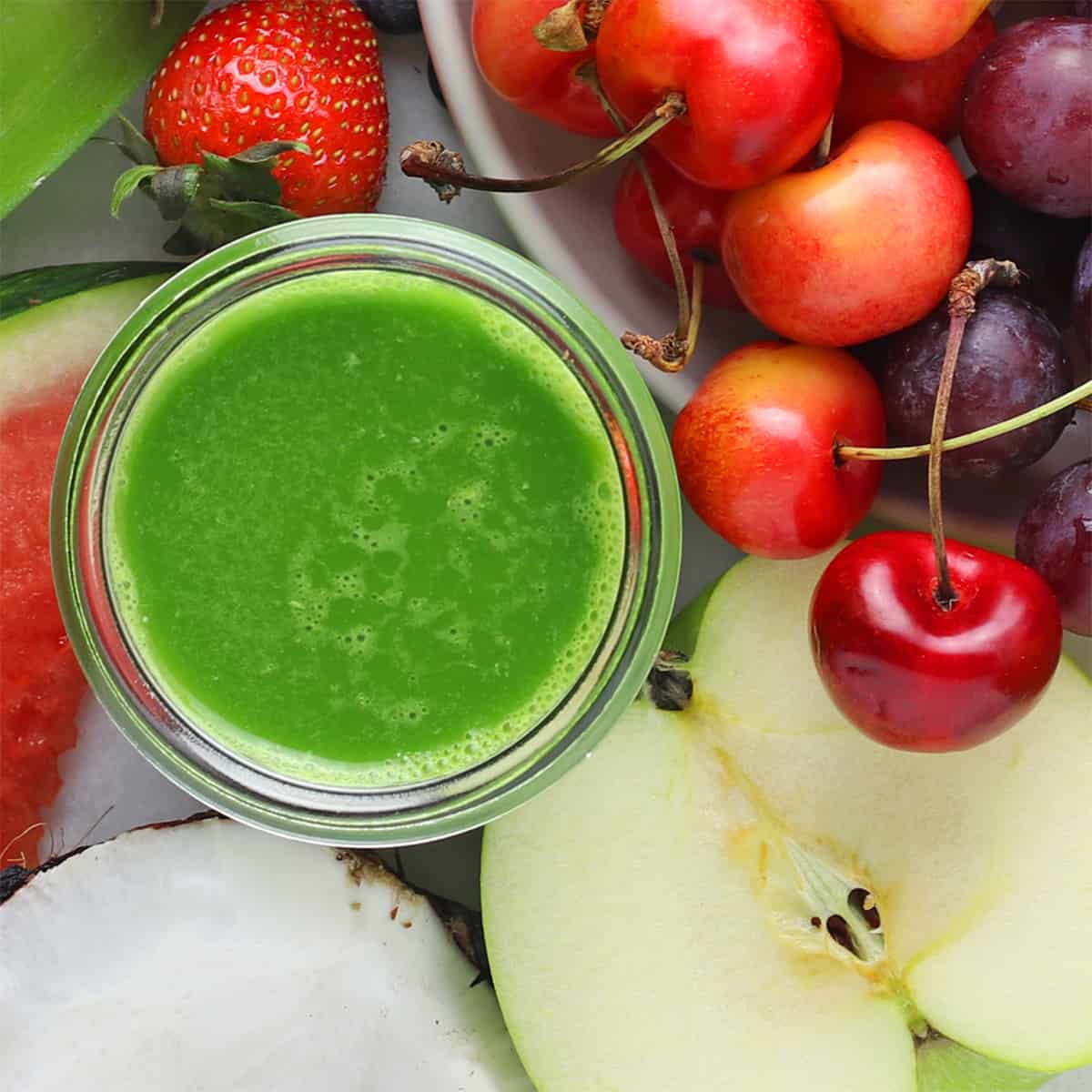
Including foods that are green in your daily diet guarantee a rich intake of vitamin C and other vital nutrients typically found in green-colored foods. Incorporating naturally green fruits and vegetables is an excellent way to keep a well-rounded and balanced diet. The smoothie recipe featured at the end of this post exemplifies an ideal green-centric dish.
Eating the rainbow gives your body a broad array of essential nutrients. In my how to eat the rainbow post, I explain the benefits of eating red, yellow, orange, green, blue, purple and white foods each day. And since loads of vegetables are green you might also be interested in my 38 best vegetables for smoothies guide.
Jump to:
Why Green Foods are Healthy
Green foods have vitamin K, A, and C. They are also high in iron, calcium, potassium, fiber and antioxidants including lutein, zeaxanthin, and chlorophyll which helps protect cells from damage. And green foods specifically are rich in phytochemicals which have numerous health benefits, including anti-inflammatory and immune-boosting antioxidants.
How Do Green Foods Get Their Color
The green color in many fruits and vegetables comes from carotenoids, anthocyanins, and primarly chlorophyll, a green pigment you might remember from your high school science class that is crucial for photosynthesis. Plants use chlorophyll to absorbs light in the red and blue parts of the electromagnetic spectrum, thus reflecting green light, giving plants their characteristic color.
A List of Common Green Foods
Apple
Apple is a crisp and slightly sweet fruit with a hint of tartness. It contains vitamin C and dietary fiber, promoting digestive health. Popular types include granny smith, gala, and fuji apples.
Asparagus
Asparagus is a slender, green vegetable with tender stalks and pointed buds at the tips. Known for its slightly sweet flavor, asparagus is rich in essential nutrients such as folate, vitamins A, C, and K, and provides a good source of fiber. Two popular types of asparagus include the green variety and the white variety.
Avocado
Avocado has a creamy texture and a mild, buttery taste. Rich in healthy monounsaturated fats, it provides potassium and vitamin K. Popular types include hass, fuerte, and reed avocados.
Bamboo shoot
Bamboo shoot is a crisp and mildly sweet vegetable with a unique, earthy flavor. It contains fiber and essential nutrients. Popular types include chinese bamboo shoot and sweet bamboo shoot.
Bell pepper
Bell pepper is a crunchy vegetable with a mildly sweet flavor. It's an excellent source of vitamin C and antioxidants. Popular types include green, red, and yellow bell peppers.
Broccoli
Broccoli has a mild, earthy taste and a crunchy texture. Packed with vitamin C, fiber, and antioxidants, it supports immune health. Popular types include calabrese, romanesco, and purple sprouting broccoli.
Celery
Celery is a crisp and crunchy green vegetable with long, fibrous stalks and bright, feathery leaves. Rich in vitamins K and C, as well as folate and potassium, celery is not only low in calories but also provides a refreshing and hydrating addition to various dishes. Popular types include pascal and golden boy.
Chayote
Chayote is a green, wrinkled vegetable with a crisp texture and a mild taste reminiscent of a cucumber. It provides vitamin C and dietary fiber. Some types include giant white and chocho chayotes.
Cucumber
Cucumber is a refreshing, watery vegetable with a mild flavor. It's hydrating and contains vitamin K. Popular types include english, persian, and kirby cucumbers.
Dragon fruit
Dragon fruit, also known as pitaya, has a mildly sweet taste with a crunchy texture. It's rich in antioxidants and vitamin C. Popular types include hylocereus, selenicereus, and stenocereus dragon fruits.
Grape
Grapes are juicy and sweet with a slight tartness. They contain antioxidants and vitamin C. Popular types include red, black, and green grapes.
Green beans
Green beans are vibrant, slender pods with a crisp green color. They are high in vitamins C and K, as well as folate and fiber. Popular types include blue lake, and French haricot vert.
Kale
Kale is a leafy green vegetable with leaves that come in a variety of shapes and shades of green. Its flavor is slightly bitter yet it is packed with nutrients such as vitamins A, C, and K, as well as calcium, iron, and antioxidants. Popular types include curly, lacinato (dinosaur), and baby.
Kiwi
Kiwi has a tangy-sweet taste and vibrant green flesh speckled with tiny black seeds. It's rich in vitamin C and dietary fiber. Common types include hayward, zespri sungold, and arctic kiwi.
Lettuce
Lettuce is a crisp, leafy green with a mild flavor. It provides vitamins A and K, as well as folate. Common types include romaine, iceberg, and butterhead lettuce.
Lime
Lime is a zesty and sour citrus fruit with a bright green color. It's a good source of vitamin C. Popular types include persian, key, and kaffir limes.
👉Want to Save This Recipe?
Luffa
Luffa, also known as sponge gourd, is a unique vegetable with a slightly bitter taste. When young, it has a tender texture suitable for cooking. Popular types include angled luffa, sponge gourd, and smooth luffa.
Pear
Pear has a sweet and juicy taste with a slightly grainy texture. It offers dietary fiber and vitamin C. Popular types include bartlett, anjou, and bosc pears.
Peas
Peas are small green seeds encased in pods. With a sweet and slightly starchy taste, peas are a good source of dietary fiber, vitamins A and C, as well as essential minerals like iron and potassium. Two popular types include garden and sugar snap pea.
Rhubarb
Rhubarb is a tart and tangy vegetable often used in desserts. It's a good source of vitamin K and dietary fiber. Popular types include victoria, macdonald, and cherry red rhubarb.
Spinach
Spinach is a tender leafy green with a mild, earthy taste. It's rich in iron, vitamins A and C, and antioxidants. Popular types include savoy, baby spinach, and bloomsdale spinach.
Watercress
Watercress is a peppery, leafy green with a bold flavor. It's high in vitamins A and C, as well as iron. While not rare, it adds a distinctive taste to salads. Popular types include English watercress, broadleaf watercress, upland cress and wasabi.
Other Lesser-Known Green Foods
Kohlrabi: Resembling a mix between a turnip and a cabbage, kohlrabi is a member of the Brassica family, offering a mild, slightly sweet taste.
Romanesco Broccoli: Known for its unique fractal-like appearance, this lime-green vegetable is a type of cauliflower with a nutty flavor.
Feijoa (Pineapple Guava): This tropical fruit has a green, gritty skin and a sweet, aromatic, and slightly tangy taste.
Bok Choy (Pak Choi): A type of Chinese cabbage, bok choy has dark green leaves and white stems, providing a mild, slightly peppery flavor.
Celeriac (Celery Root): This knobby, brownish-green root vegetable has a subtle celery flavor and is often used in soups and stews.
Dragon Fruit (Pitaya): While some varieties have pink or red skin, certain types have green skin. The inner flesh is speckled with tiny black seeds and has a mildly sweet taste.
Jicama: With a crisp and juicy texture, jicama is a tuberous root vegetable that has a mild, sweet flavor and is often enjoyed raw in salads or with dips.
Luffa (Sponge Gourd): Despite being commonly known for its use as a natural bath sponge, luffa is an edible green vegetable with a mild taste and crunchy texture.
Malabar Spinach: Unlike traditional spinach, Malabar spinach has glossy, heart-shaped leaves and a slightly peppery taste, often used in salads or cooked dishes.
Expert tip: Processed foods dyed green are not part of the rainbow diet. These include dyed candy, skittles, M&Ms, tortillas, popcorn, snack cakes, pasta, processed frozen foods.
How to Dye Foods Green
Don't use artificial food dyes full of chemicals. Use natural foods to color your edibles instead. To make food green, an effective option is to use matcha green tea. A pinch of powder in any smoothie, cookie dough, frosting or cake batter turns your recipe a lovely shade of green. For the prettiest color, choose the ceremonial grade matcha tea powder, not the lesser quality culinary grade.
FAQS
Commonly known green foods are asparagus, kale, avocado, zucchini and green beans. Less common include wombok, kalette, and luffa.
I am sure this is arguable, but lettuce is said to be the most commonly famous green food.
Try coloring cookies with matcha green tea powder, or serve up a huge salad with all the green vegetables you know.
Be sure and visit the USDA for more detail on the nutrition make up of fruits and vegetables. And remember to run any specific medical questions by your own doctor, as well as to get confirmation that my information works for you as I am not a medical professional.
More Color Themed Foods
If you love this recipe or any others on my website, please leave a 🌟🌟🌟🌟🌟 review below! It means so much to me when you try my recipes, and I'd love to know how it goes. Please leave a 📝 comment below if you have any questions.
📖 Recipe
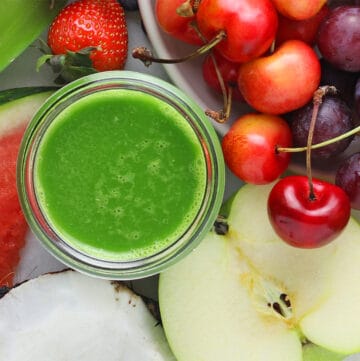
Foods that are Green: Green Apple Smoothie
Equipment
Ingredients
- ¾ cup milk
- ¼ cup milk ice cubes, loosely measured
- 1 green apple, cored and chunked
- ½ cup pineapple, frozen
- 1 cup fresh baby spinach
👉Want to Save This Recipe?
Instructions
- Add all ingredients to a blender, adding leaves and liquid first so they blend correctly.¾ cup milk, ¼ cup milk ice cubes, loosely measured, 1 green apple, cored and chunked, 1 cup fresh baby spinach, ½ cup pineapple, frozen
- After about 1 minute, pour out smoothie and enjoy. Or refrigerate for 24 hours.

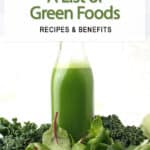
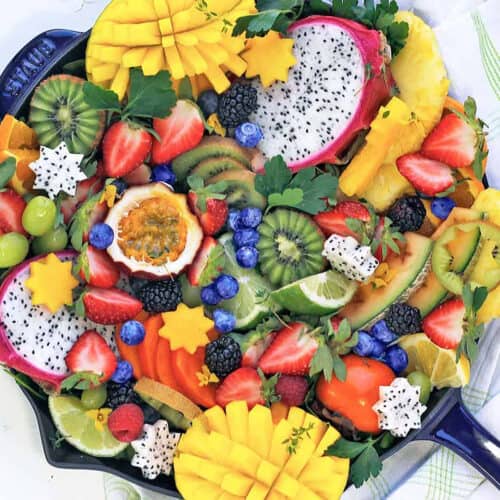
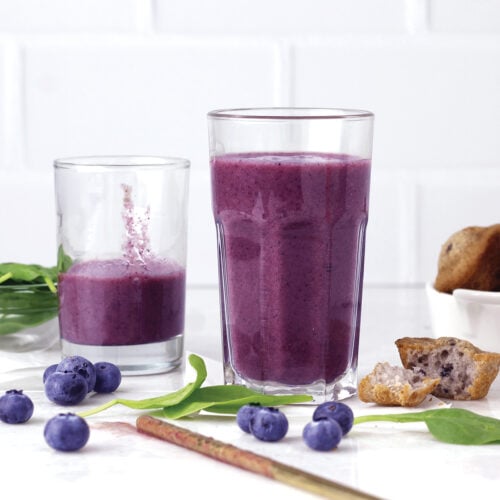
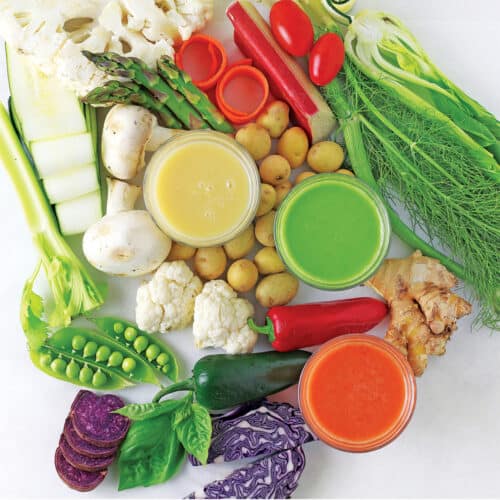
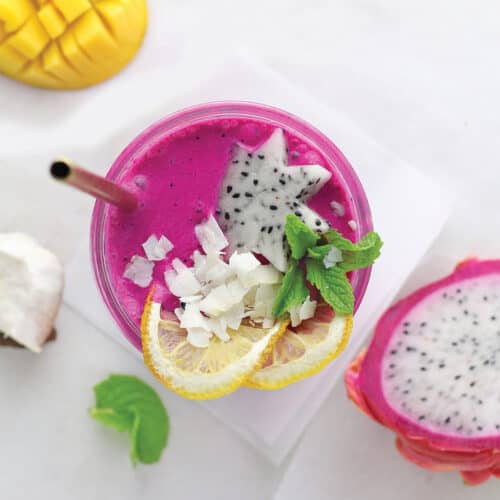



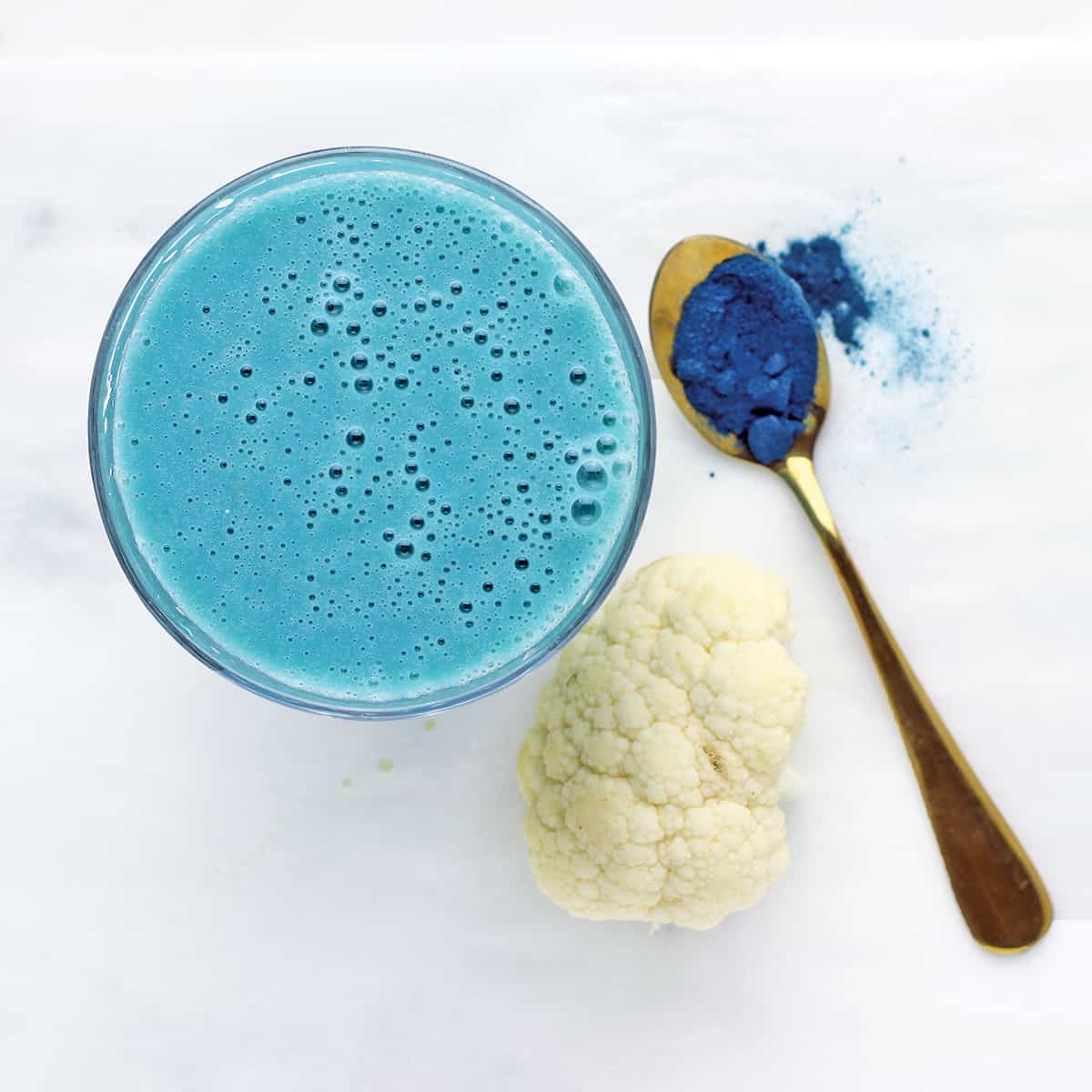
Leave a Reply